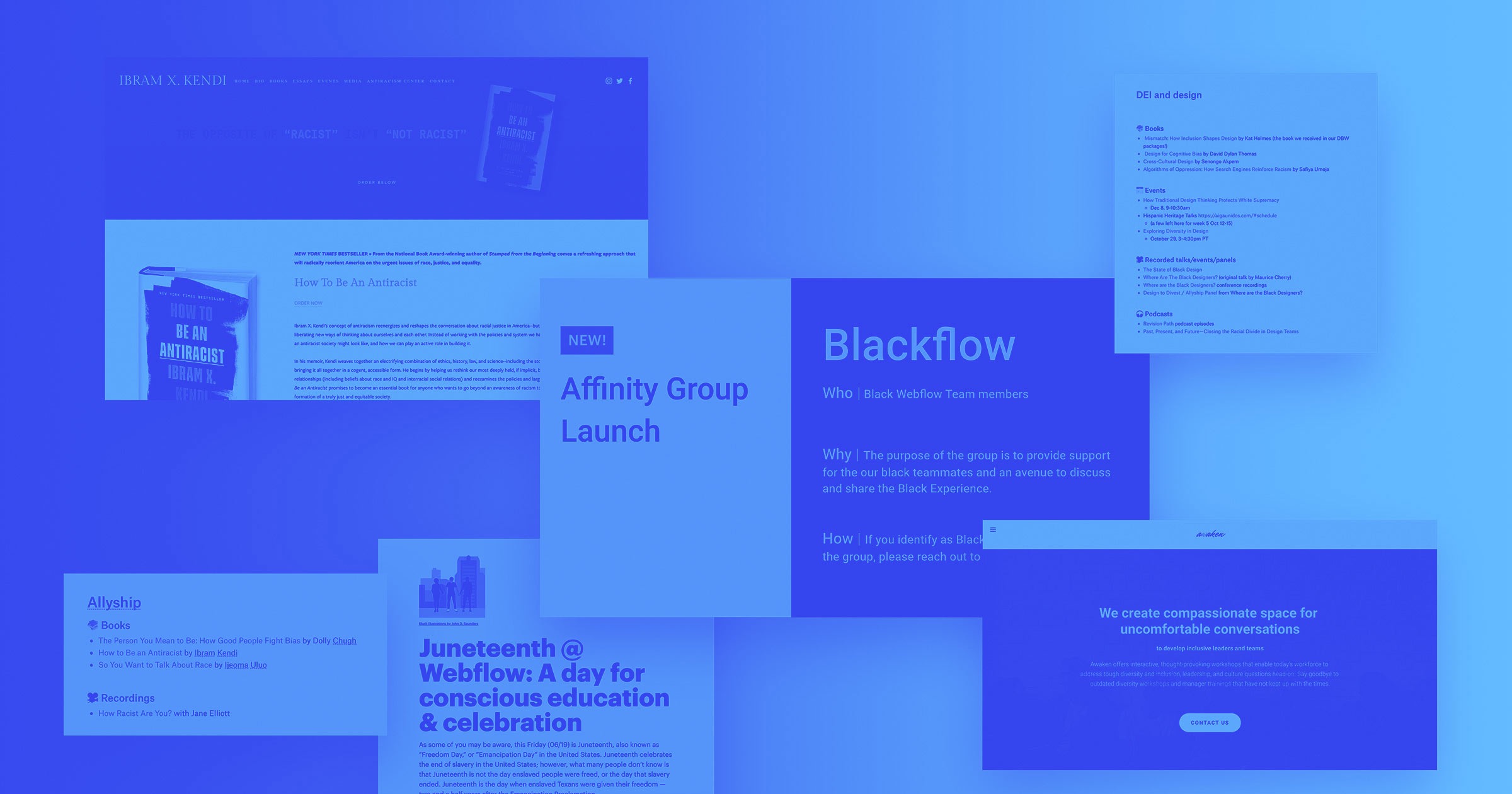As mass protests took hold of the US following the death of George Floyd, my inbox started flooding with marketing emails using “#BLM” as an opportunistic hashtag.
Among all of that spam, lay an email which was not that. This gem of an email contained a guide on “Writing about people”, which I found to be immediately useful and applicable to my everyday work. This inspired me to create our own set of anti-racist writing guidelines for the entire team at Webflow. Despite all the pandemic-driven Zoom-ing, writing still remained the main method of communication within our team, and also with our customers.
To help educate our team about how language can create experiences of exclusion and empower them to use more inclusive language, I worked with a group in our DEI council to develop a set of inclusive guidelines. Below, I summarize a few of the most impactful recommendations for creating more inclusive content, as well as a downloadable reference sheet.
I hope this provides insight and guidance on creating thoughtful, empathetic, user-centric, and inclusive content to as many folks as possible.

Free ebook: The no-code revolution
Discover the impact the no-code movement will have for the future of makers and businesses.
The inclusive language reference sheet
- Avoid referencing age, race, or ethnicity unless it’s absolutely relevant. If it is relevant, refer to age, race, or ethnicity as adjectives instead of nouns, e.g. “Hispanic people” instead of “Hispanics,” or “older people” instead of “the elderly.”
- When publicly talking about people with disabilities, consider your audience. Some people prefer identity-first language (disabled person/people), while some prefer person-first (people/person with disabilities). For example, the Americans with Disabilities Act (ADA) rule is person-first, but Webflow’s disabled community affinity group prefers identity-first. When in doubt, ask.
- Avoid terms that refer to psychiatric disabilities, like “crazy,” “insane,” “psycho/psychotic,” etc. Alternatives: wild, hectic, unreal, unbelievable, etc.
- Avoid using “guys,” “man/men” or words including them, “he/she,” or any other gendered language to refer to people (unless pronouns are verified) or groups of people. Alternatives: folks, team, all, they/them/theirs, humans/human beings, etc.
- The phrase “identifies as” invalidates trans and non-binary people’s experience. Trans and non-binary people don’t identify as the gender — or lack of gender — they are that gender. e.g. “They are non-binary,” not “They identify as non-binary.”
- Avoid referencing situations or using words or images that reinforce racial, ethnic, religious, gender, or other stereotypes and biases. For example, "Professors sometimes become so involved in their work that they neglect their wives and children." This would be more accurately stated as: "Professors sometimes become so involved in their work that they neglect their families.”
- Avoid the term “non-white” or other terms that treat whiteness as a default.
- When referring to Black people, capitalize “Black.” When referring to Native or Indigenous people, capitalize “Native” and “Indigenous.”
- Terms like “blacklist,” “whitelist,” or “master” refer to metaphors about race and enslavement. Alternatives: block/permit/allow, main/primary
Often, the best way to write more inclusively is to get more specific about what you’re trying to say. e.g. “that’s unheard of” rather than “that’s crazy.”
And of course, don’t make assumptions. Ask how people identify themselves, and be generally aware of complexities within racial, ethnic, gender, and religious identities.
































